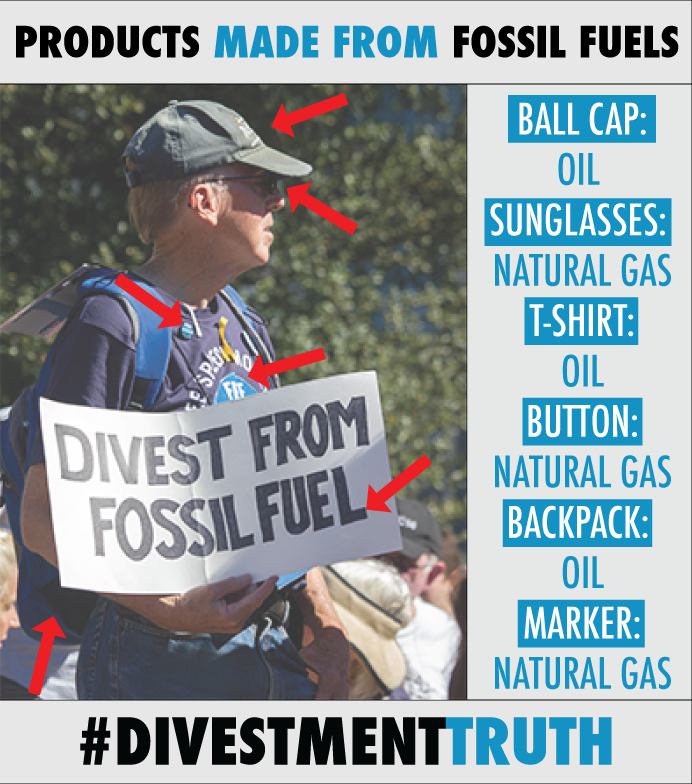The graphic below exemplifies the hypocrisy of radical anti-energy activists, who pressure you to give up everything from the deodorant you put on in the morning to the car you drive to work—even as they use fossil fuels in their daily lives. Given that this activist is literally covered with products made from fossil fuels, perhaps we should be celebrating “Hydrocarbon Appreciation Day” instead.
Click the photo below to follow the rest of our efforts on our Divestment Truth page. If you’re ready to take action and stand up against the morally bankrupt divestment movement, click here to join us in our fight for affordable, reliable energy!









